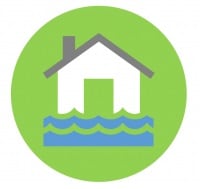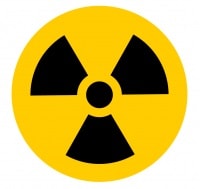Reproductive Health in Emergency Preparedness and Response
CDC’s Division of Reproductive Health (DRH) advances science and builds the capacity of the public health system to address reproductive and infant health before, during, and after public health emergencies. DRH’s priority activities include working in settings where disasters have occurred and developing emergency care information for pregnant and postpartum people and their health care providers.
Public Health Emergencies disrupt lives, families, and communities. These emergencies fall into the following three categories:

Natural disasters (hurricanes, tornadoes, wildfires, floods, earthquakes)

Emerging or significant outbreaks of diseases (COVID-19, Pandemic Influenza)

Human-caused disasters (bioterrorist attacks, nuclear/radiation accidents)
Public health emergencies can affect access to medical and social services, increase stress, intensify physical work, and expand caregiving duties. This may affect access to medical services and health outcomes among women of reproductive age (15 to 44 years) and may particularly impact people who are pregnant and postpartum and infants. The Pandemic and All-Hazards Preparedness and Advancing Innovation Act of 2019 classifies pregnant women and infants as a population with special clinical needs. The health of people who are pregnant, postpartum, and lactating and their infants might be significantly impacted by new or emerging threats such as Zika virus that can cause birth defects. These threats may warrant further investigation and/or response efforts.
Responding to Recent Public Health Emergencies
Coronavirus Disease 2019 (COVID-19)
CDC is supporting multiple efforts to better understand the impact of COVID-19 during pregnancy on both the mother and infant. Data collected as part of these surveillance and research efforts can help direct public health action and inform clinical guidance for the care of affected pregnant and postpartum people and infants. Learn more about data on COVID-19 during pregnancy, clinical guidance, and vaccination considerations for people who are pregnant or breastfeeding. Find resources on pregnancy, breastfeeding and caring for newborns and additional communication tools in the COVID-19 Toolkit for Pregnant People and New Parents.
Zika Virus
In collaboration with other CDC subject matter experts, programs and partners, such as CDC Foundation and Puerto Rico Department of Health, DRH did the following:
- Established surveillance systems to collect information on pregnant people infected with Zika virus in the United States and associated territories.
- Partnered with Puerto Rico Department of Health to implement the Zika Postpartum Emergency Response Surveys (PRAMS).
- Used the Behavioral Risk Factor Surveillance System (BRFSS) to implement, analyze and disseminate findings from four surveys: Contraceptive Assessment in Puerto Rico during Zika (CAPRZ)—2016, BRFSS Family Planning Module—2016 Early Start, Zika Call Back Survey in Puerto Rico—2017, and Reproductive Health Call Back Survey in states—conducted in 2020.
- Established the Zika Contraception Access Network (Z-CAN) and developed a toolkit for increasing contraceptive access during public health emergencies.
Ebola Virus Disease (EVD)
In collaboration with other CDC subject matter experts, the DRH prepared guidance documents on breastfeeding and recommendations for screening and treating pregnant women with suspected or confirmed Ebola virus. DRH also provided technical support for Rapid Ebola Preparedness visits to US hospitals preparing for possible Ebola infected obstetric cases and addressed inquiries from health care providers and the general public. Learn more about CDC’s Maternal Health Response to 2014-16 Ebola outbreak.
Pandemic Influenza
During the 2009 H1N1 Pandemic response, CDC’s Maternal Health Team developed nine maternal health guidance documents and addressed more than 4,600 maternal health inquiries. See a Supplement to the American Journal of Obstetrics and Gynecology (AJOG) to learn more about lessons learned during the Pandemic H1N1 response and special considerations for pregnant people and newborns.